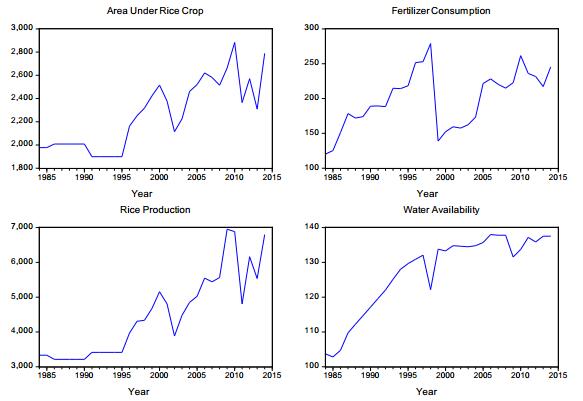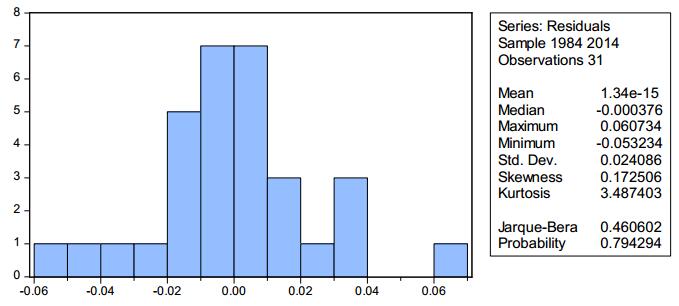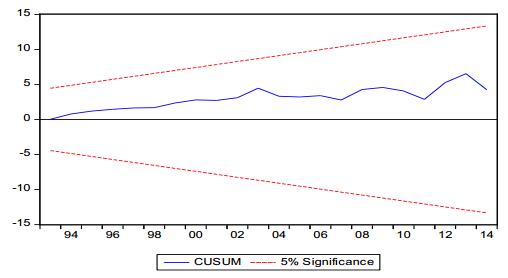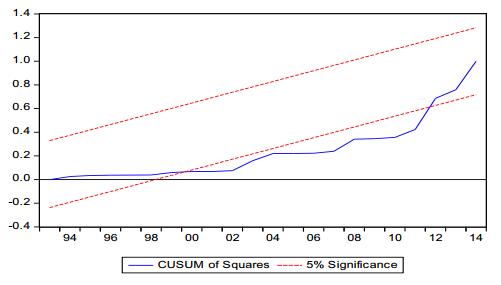1. Introduction
Fertilizer is the key instrument for the crop production. Unlike in developing economies, chemical fertilizers are underutilized and often subsidized by the government [1]. In developed countries, chemical fertilizers are usually used more than others and are sometimes taxed. The main issue with over usage of chemical fertilizers is that they are the main cause of water pollution. Nutrient leaching to the Baltic Sea has created one of the largest marine hypoxic regions in the world, and for Sweden, about 40 percent of this leaching comes from farmland [2]. The use of fertilizers has been key to the green revolution in many countries around the world [3]. Christoplos research conceptualizes an effective agricultural extension service that includes all the various activities to provide the information and advice needed and required by the food system and rural farmers and other actors [4]. Agricultural extension has strengthened peasants' ability to innovate by providing access to knowledge and information. An important feature of Pakistani agriculture is the advantage of small holdings. Smallholders, defined as five hectares of land, make up 74% of the country's total peasant population; though only 34% of the total arable land is in the area they command [5]. Asia, almost half of the world's population and 90% of the world's rice production are growing and consuming [6]. Ansari [7] stated that by introducing and promoting innovative agricultural technologies, crop productivity can be increased. Agriculture, as a pillar of the Pakistani economy, needs more attention to increasing productivity. According to him, peasants have been looking for sources of finance to lend in convenient terms to increase their agricultural productivity. Similarly, Fazal [8] reported that production loans to buy seeds and fertilizers remained below 50% between 1980 and 1981, after which it improved and extended 63.9% in 2002–2003. Junejo [9] pointed out that the potential of agriculture should be exploited by increasing the yield of crops. Increasing yield of crops is the only way to decrease costs of production. Modern agricultural technology is also playing a vital role for the development of agriculture and advocate farmers and give largely access to new technology and information [10]. However, it is clear that smallholders have low access to agricultural extension in the country [11]. Some empirical studies have done on the use of fertilizers [12]. However, little is known about the influence of agricultural extension services on the usage of fertilizers and hence their effect on rice production. Although some researchers include an extension as an explanatory variable in the adoption model norms [13,14], the impact of promotion in these studies varied and did not expand on the soil and the actual impact of improved technology to reach a consensus. Rice is cash and the main food crop; a second staple food of Pakistan after wheat crop and it is also a main exportable item after cotton of the country [15,16]. The rice has shared in the sector of Pakistan's agriculture at 0.7% in the GDP and accounts 3.2% of Pakistan's agriculture value-added product. Pakistan has planted enough high-quality rice to meet both domestic demand and exports. Pakistan's economy earned foreign exchange of US 1.53$ billion from the export of rice in 2014–2015. According to the Economic Survey of Pakistan [17], rice was cultivated on an area of 2891 (000 Hectares) indicating a 3.6 percent improve over the previous year of 2789 (000 Hectares). Regarding the production of rice in 2014–2015 was 7005 (000 tonnes), this showing the highest production compares to last year's production of rice 6798 (000 tonnes). The increase in rice production is mainly based on the achievements of regional targets in Punjab and Sindh provinces of Pakistan. In Punjab province of Pakistan, the area exceeded the target by 12.1%, resulting in output exceeding the target of 14.7%. Similarly, in Sindh province of Pakistan, production exceeded the target of 22.2% and the area exceeded 23.2%. In Punjab province of Pakistan, the sugarcane area was moved to rice crops as growers discouraged by sugar mills paying their dues on time. On the other hand, production of rice also increased due to more area brought for sowing, healthy fertilizer off taking, timely availability of water and more area cultivated under improved rice varieties [17]. In Pakistan several researchers [16,18,19,20,21] have worked on technical efficiency and the effect of agricultural credit on rice production, however, this empirical study is different from earlier studies. This empirical study is endeavoring to find out the association between area under rice cultivation, usage of fertilizer, water availability and the dependent variable that is rice production in Pakistan. It is likely to direct the policymaker to select where upcoming main agricultural inputs and factors of production ought to be distributed to enhance rice production. The main aims of this paper is to determine the factors that affect the rice production in Pakistan over the period of 1984–2014 by using ARDL bound testing approach for cointegration.
2. Materials and methods
2.1. Data source
In this paper time series data was used from 1984–2014 and it was collected from Pakistan Bureau of Statistics. Rice production is dependent variable and measure in thousand ton kilogram. As an independent variable, we used crop-wise fertilizer in thousand nutrient tons. Beside fertilizer variable this study also considered other explanatory variables such as area under rice cultivation in thousand hectares and water availability in million acre-feet (MAF).
2.2. Empirical model
In order to analyze the linkage between rice production, area under rice cultivation, usage of fertilizer and water availability this study employed multivariate regression model specified as:
Where RP represents rice production, AR represents area under rice crop, FER represents fertilizer consumption for rice cultivation, WA represents water availability and εt represents the error term.
By using natural logarithm to Eq 1, a log-linear model is expressed as follows:
2.3. Co-integration with Auto Regressive Distributed Lag (ARDL) approach
In this paper the ARDL bounds testing approach developed by [22,23], was used to assess the long-run and short-run linkage between rice production, area under cultivation, usage of chemical fertilizer and water availability in Pakistan over the period of 1984–2014. The relationship of the long-run and short-run is examined the ARDL representation of the unrestricted error correction model (UECM) of (Eq 2) as expressed in (Eq 3):
Where, Δ represents the difference operator, ψ represents the coefficients of short-run, δ denotes the coefficients of the long run and εt represents the error term. The long-run co-movement among the variables of interest is ascertained on the basis of the estimated F-Statistic.
3. Results and discussions
3.1. Descriptive statistics and analysis of unit root
Table 1 displays the descriptive statistics of the important variables used in the empirical analysis. The descriptive statistics show that the area under cultivation for rice crop has a substantial contribution to the rice production in Pakistan. Similarly, other agricultural inputs like as fertilizer and water availability are the main components for the rice productivity. Trends of the study variables are displayed in the Figure 1. All the study variables have an increasing trend. The variation in the study variables definitely affects the rice production. Therefore, this research paper aims to assess the effect of such policy variables on the rice production over the period 1984–2014.
Table 1. Descriptive statistics.
|
Rice Production in Pakistan (000 tonnes) |
Area Under Rice Crop in Pakistan (000 Hectares) |
Fertilizer Consumption for Rice in Pakistan (000, N/T) |
Water Availability in Pakistan (MAF) |
| Mean |
4481.903 |
2262.981 |
198.7884 |
127.1839 |
| Median |
4333.000 |
2251.100 |
214.2000 |
132.0500 |
| Maximum |
6952.000 |
2883.000 |
279.0000 |
137.9800 |
| Minimum |
3213.000 |
1899.000 |
120.3000 |
102.8100 |
| Std. Dev. |
1191.788 |
295.3604 |
41.40632 |
11.19804 |
| Observations |
31 |
31 |
31 |
31 |
It is essential to check the order of integration of the said study variables of the present study. In such, situation, analysis of unit root tests ensures that none of the study variables are integrated of order two to keep away from spurious results. Ouattara [24] reported that if any variable is integrated of order two then computed F-test for co-integration becomes senseless. According to [23], critical bonds are based on an assumption for instance variables should be integrated of order 1 or order 2. Consequently, analysis of unit root test is still very important to ensure that no variable of this study is integrated of order 2. In this study, the Augmented Dicky Fuller (ADF) and Phillips-Perron (P-P) unit root tests are used to find out the order of integration. The results of the order of integration for the variables at levels and at first difference are presented in Tables 2 and 3. The results display that rice production (RP) and area under rice cultivation (AR) are integrated at I(1) while usage of chemical fertilizer (FER) and water availability (WA) are integrated at I(0). It means the order of integration suggests to apply the ARDL bounds testing technique for cointegration.
Table 2. ADF unit root test results.
| Variables |
Level |
First differences |
Conclusion |
|
C |
C & T |
C |
C & T |
|
| lnRP |
−0.640484 |
−4.066696 |
−5.834146*** |
−5.842757*** |
I(1) |
| lnAR |
−1.017329 |
−3.197836 |
−6.621573*** |
−6.579079*** |
I(1) |
| lnFER |
−5.042759*** |
−5.363736*** |
−7.391924*** |
−7.256624*** |
I(0) |
| lnWA |
−5.303667*** |
−4.810838*** |
−4.272148*** |
−4.529719*** |
I(0) |
| *Note: C represents constant, C & T represents constant and trend and *** shows rejection of the null hypothesis of the presence of unit root at 1%. |
Table 3. Phillips-Perron unit root test results.
| Variables |
Level |
First differences |
Conclusion |
|
C |
C & T |
C |
C & T |
|
| lnRP |
−0.182138 |
−4.029303 |
−8.249161*** |
−8.600116*** |
I(1) |
| lnAR |
−0.573698 |
−2.955238 |
−8.930550*** |
−9.076445*** |
I(1) |
| lnFER |
−5.042759*** |
−5.365692*** |
−26.41082*** |
−25.49745*** |
I(0) |
| lnWA |
−5.304742*** |
−6.335202*** |
−20.95853*** |
−22.98106*** |
I(0) |
| *Note: C denotes constant, C & T represents constant and trend and *** show rejection of the null hypothesis of the presence of unit root at 1%. |
3.2. Analysis of co-integration
With the purpose of analyze the cointegration linkage between the study variables, the ARDL bounds test is used. Table 4 displays that there is a long-run linkage between the study variables when RP represented rice production in logarithmic form is the dependent variable and the rest of the variables are independent variables. The computed F-statistic 4.2461 is greater than the upper bound at a 90% confidence level. Hence the null hypothesis of no cointegration is rejected. These results display that there is robust association amongst the variables such as rice production, area under cultivation, usage of chemical fertilizer and water availability.
Table 4. ARDL bounds test for co-integration results.
| F-Statistic |
95% Lower Bound |
95% Upper Bound |
90% Lower Bound |
90% Upper Bound |
Decision |
| 4.2461 |
3.6509 |
4.9397 |
2.9994 |
4.1196 |
Cointegration |
| W-Statistic |
|
|
|
|
|
| 16.9843 |
14.6037 |
19.7502 |
11.9976 |
16.4785 |
Cointegration |
| *Note: Calculated and generated from Microfit 5.01 software. |
For robustness check, this empirical study also used the Johansen cointegration test and the results are presented in Table 5. We find one cointegration vector; this means that the long-run association between the study variables is valid and robust and the null hypothesis of no cointegrating vector is rejected against the null of at most one cointegrating vector under the Trace Statistic and Maximum eigenvalue at 1% significance level.
Table 5. Results of the Johansen cointegration test.
| Trace Statistic |
| Null Hypothesis |
Alternative Hypothesis |
Test Statistic |
5% Critical value |
Prob. value |
| H0: r ≤ 0 |
H1: r > 0 |
63.03390*** |
47.85613 |
0.0010 |
| H0: r ≤ 1 |
H2: r > 1 |
29.13188 |
29.79707 |
0.0595 |
| H0: r ≤ 2 |
H3: r > 2 |
11.90703 |
15.49471 |
0.1614 |
| H0: r ≤ 3 |
H4: r > 3 |
0.001290 |
3.841466 |
0.9705 |
| Maximum Eigenvalue Statistic |
| Null Hypothesis |
Alternative Hypothesis |
Test Statistic |
5% Critical value |
Prob. value |
| H0: r ≤ 0 |
H1: r > 0 |
33.90202*** |
27.58434 |
0.0067 |
| H0: r ≤ 1 |
H2: r > 1 |
17.22485 |
21.13162 |
0.1617 |
| H0: r ≤ 2 |
H3: r > 2 |
11.90574 |
14.26460 |
0.1142 |
| H0: r ≤ 3 |
H4: r > 3 |
0.001290 |
3.841466 |
0.9705 |
| *Note: *** means rejection of the hypothesis at 1% of significance level. |
3.3. Long-run results
Table 6 presents the results for long-run linkage between dependent and three explanatory variables of the study. It was found that area under rice cultivation is significant (p < 0.01) and indicating to increase the rice production. The land is the main input in production system reveal its coefficient is 0.82527. This result implies that 1per cent increase in area under cultivation will increase the rice production almost by 0.82527 per cent. Similarly, the coefficient of chemical fertilizer is 0.10375 also elastic and statistically significant (p < 0.05). This implies that 1 per cent increase in usage of chemical fertilizer will increase rice production at 0.10375 per cent. In other words, chemical fertilizer plays a very much important role in increasing the rice production. Additionally, the estimated long-run coefficient of water availability is statistically significant (p < 0.05). This implies that 1 per cent increase in availability of water rice production will enhance at 0.091630 per cent. The findings of this study are contradicted by the findings of most of the previous studies such as [16,19,21,25,26,27,28,29,30]. Most of these past studies were based on survey data and used OLS regression method and Stochastic Frontier Approach (SFA) but the present study followed ARDL bounds testing approach to cointegration in order to assess the long-run and short-run relationship between rice production, area under cultivation, usage of chemical fertilizer and water availability in Pakistan over the period of 1984–2014.
Table 6. Results of long-run analysis.
| Dependent variable is lnRP |
| Regressors |
Coefficient |
Standard Error |
T-Ratio |
Prob. value |
| lnAR |
0.82527*** |
0.14002 |
5.8939 |
0.000 |
| lnFER |
0.10375** |
0.036984 |
2.8053 |
0.010 |
| lnWA |
0.091630** |
0.037485 |
2.4444 |
0.022 |
| C |
0.23263 |
0.95037 |
0.24478 |
0.809 |
| *Note: *** and ** Significant at 1% and 5% level. |
3.4. Short-run results
The Error Correction Model (ECM) was estimated to identify the short run dynamics between rice production (the dependent variable) and its respective exogenous variables. It was observed from Table 7 that area under rice cultivation was positively and statistically significant (p < 0.01) related to the rice production in the both long and short-run. The coefficient of the area under cultivation is 0.53533. This implies that 1 per cent increase in area under cultivation rice production will rise at 0.53 per cent in short-run. The chemical fertilizer has a significant (p < 0.01) influence on rice production in both short-run and long-run. The estimated short-run coefficient of chemical fertilizer is 0.03622, this means 1 per cent increase in usage of chemical fertilizer will lead to increase in rice production almost by 0.03 per cent. Whereas, water availability was found positively linked to the rice production in both the long and short-run. Nonetheless, it was statistically insignificant with a coefficient of 0.00537 in the short run. The value of R2 is 0.80195, which means 80 per cent variation in the rice production is due to these three independent explanatory variables. The ECM term is −0.34918 and highly significant (p < 0.01); which show that adjustment takes place 34.918 percent per year towards the long run equilibrium. The computed F-statistic is 25.3081 (p < 0.01) displays the fitness of the empirical model is good.
Table 7. Results of short-run analysis.
| Dependent variable is lnRP |
| Regressors |
Coefficient |
Standard Error |
T -Ratio |
Prob. value |
| ∆LnAR |
0.53533*** |
0.80076 |
6.6852 |
0.000 |
| ∆LnFER |
0.03622*** |
0.00904 |
4.0057 |
0.000 |
| ∆LnWA |
0.00537 |
0.00628 |
0.8541 |
0.401 |
| ECM(-1) |
−0.34918*** |
0.10019 |
−3.4852 |
0.002 |
| R-Squared = 0.80195 |
F-Stat. F(4, 27) 25.3081 [0.000] |
| R-Bar-Squared = 0.75442 |
DW-statistic = 2.0646 |
| *Note: *** Significant at 1% level. |
3.5. Diagnostic tests of ARDL model
It can be viewed from (Table 8 and Figure 2) that the ARDL model has passed all diagnostic tests. The results of diagnostic tests suggest the absence of model serial correlation, non-normality and heteroskedasticity errors in the residuals. Additionally, the CUSUM and CUSUMQ from [31] also show the stability of the model at the 5 percent of significance level (Figures 3 and 4).
Table 8. Results of diagnostic tests of ARDL model.
| Test Statistics |
F-statistic |
Prob. value |
| Breusch-Godfrey Serial Correlation LM Test |
1.623061 |
0.2075 |
| Jarque-Bera Normality |
0.460602 |
0.7942 |
| Heteroskedasticity Test: ARCH |
1.527326 |
0.2360 |
4. Conclusion
Rice is main staple food crop after wheat and as well as a cash crop of Pakistan. It is also considered the staple food crop after wheat and as well as a cash crop of Pakistan. This empirically study assessed the effect of fertilizer and other control variables like as area under rice cultivation and water availability on rice production in Pakistan by using the ARDL bounds testing approach based on the annual data covering 1984–2014 period. The results reveal that in the long run the rice production positively and significantly influenced by land area under cultivation, usage of fertilizer and water availability. It may be concluded that increase in land area under cultivation, usage of fertilizer and water availability will lead to increase the rice production. The estimated short-run results reveal that the rice production in Pakistan is positively and significantly influenced by changes in area under cultivation and usage of fertilizer. In contrast, the insignificant short-run coefficient of water availability suggests that policymakers may ensure that the funds for irrigation are not being misallocated and also not misappropriated. The findings of the both long-run and short-run conclude that a better agricultural management, increase in sowing area, balanced use of fertilizer, changes in cropping patterns and timely availability of water might contribute to a higher level of rice production in Pakistan. The ECM is 0.34918 with correct negative sing and it is significant (p < 0.01); which show that adjustment takes place 34.918% per year towards the long run equilibrium. This show that speed of adjustment is high. The ARDL model passed all the diagnostics tests and suggest that there is no serial correlation no heteroskedasticity and no normality problem.
5. Conflict of interest
The authors declares no conflict of interest.









 DownLoad:
DownLoad: 










